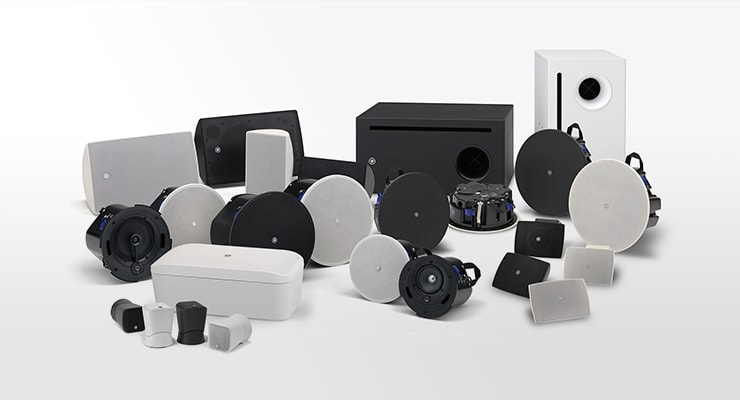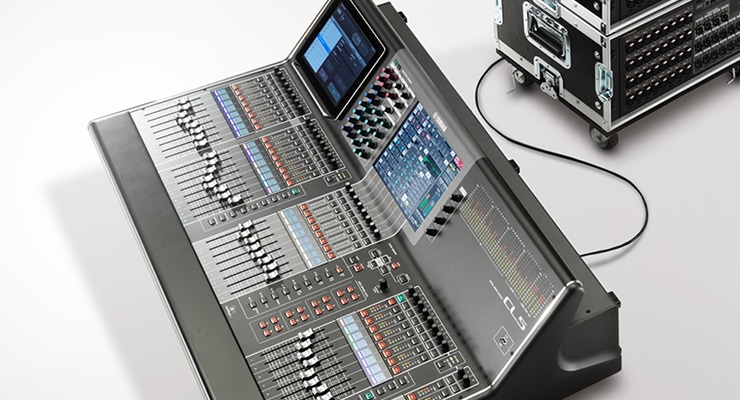Better Sound for Commercial Installations
Part 1: Sound Basics

01. What is Sound?
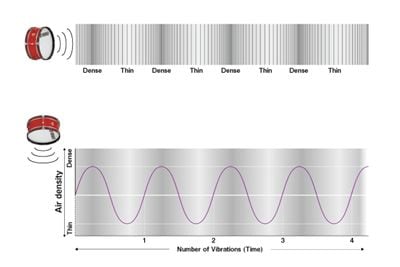
Before we discuss sound equipment and systems, let's take a look at sound itself. Keeping it as brief and as simple as possible, we'll explain the basics you need for a full understand of the content that follows.
Figure: Variations in Air Density Create Sound
Sound is Basically Vibrating Air
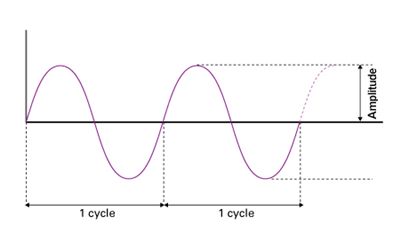
onsider how sound is produced by a drum. When the player strikes the drum, the drum "head" vibrates. That vibration is transmitted directly to the surrounding air, pushing and pulling it as the drum head moves alternately inward and outward. That vibration causes variations in the density of the air that travel away from the drum head like waves. This is what is referred to as "sound waves." When the sound waves reach our ears they impinge on our eardrums and cause them to vibrate correspondingly, and then our nervous system and brain take over to translate those vibrations into perceived sound.
Here's what it looks like in simple graphic form:
(Figure: Frequency and Amplitude)
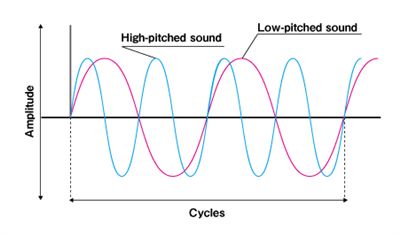
Now take a look at the graph. One complete "round trip" of the waveform - up from zero, then down to below zero, and back up to zero again - corresponds to one "cycle" of the waveform. The distance between zero and the peak on the waveform is its "amplitude."
The basic qualities of the sounds we are surrounded by everyday - high pitched, low pitched, loud, and soft - are determined by the frequency (the number of cycles per second) and the amplitude of the waveforms of those sounds.
(Figure: High-pitched and Low-pitched Sound)
Frequency Determines Pitch
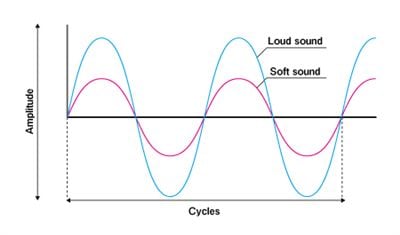
We perceive sounds as having higher or lower pitch, and that perception is determined by how many cycles of the sound's waveform occur each second: i.e. the sound's "frequency." The more cycles per second, the higher the frequency and the higher the perceived pitch.
In the case of a drum set, for example, the large bass drum produces a lower pitch than the smaller snare drum. Generally, the larger the vibrating element of a musical instrument, whether it's a larger drum head or a longer piano string or a longer column of air in a wind instrument, the lower the pitch.
(Figure: Loud and Soft Sound)
The unit used to describe frequency, or the number of cycles per second, is the "Hertz," abbreviated as "Hz." A waveform in which only one complete cycle occurs per second has a frequency of 1 Hz, ten cycles per second is 10 Hz, 100 cycles per second is 100 Hz, and so on. When we get into thousands of Hertz we can use another abbreviation: "kilohertz," abbreviated as "kHz." You can say it either way, as "one thousand Hertz" (1,000 Hz) or "one kilohertz (1 kHz). There are individual differences, but the normal range of human hearing is from about 20 Hz to 20,000 Hz (20 kHz).
The frequencies are arbitrary and vary a bit, but the range from 20 Hz to about 250 Hz is generally considered to be the low frequency range. Within this range frequencies below about 80 Hz are considered to be ultra-low frequencies. The midrange frequencies extend from 250 Hz up to around 4,000 Hz, and this band is sometimes further sub-divided into low-mid, mid, and high-mid bands. Our ears are most sensitive to midrange sounds. Everything above 4,000 Hz is the high frequency band, also sometimes subdivided for even finer control.
Another interesting characteristic of human hearing is that as pitch gets higher it becomes easier for us to determine the direction from which the sound is coming. Low-pitched sounds are less directional and it is harder for us to locate the source. That's one reason that car horns and sirens have a relatively high pitch.
Amplitude Determines Loudness
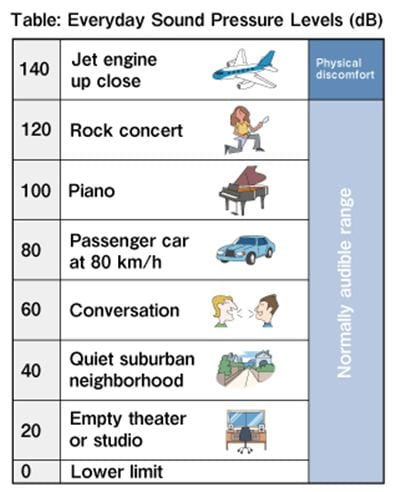
Sounds are perceived as being loud or soft according to the amplitude of their waveform. Higher amplitude corresponds to louder sound. The harder you beat a drum, for example, the greater the amplitude of its physical vibration and thus the greater the amplitude of the waveform transmitted through the air.
Our sensitivity to loudness is not linear. We are very sensitive to differences in the loudness of soft sounds, but as the sound gets louder it becomes more difficult to differentiate between small changes in loudness. Loudness measurements that take this characteristic into account are expressed as "sound pressure level," or simply "SPL," and the unit used to measure SPL is the decibel, abbreviated as "dB." Sometimes you'll see acoustic measurements of this sort written as "dB SPL," but in many cases it is simply expressed as "dB." We'll use the latter form in the following text.
The softest sound detectable by the human ear is defined as 0 dB, but of course there are individual differences. Many people can't hear sounds that soft. At the other end of the scale, the loudest sound that the human ear can handle for short periods without discomfort and possibly damage is around 120 dB.
The chart to the right lists the sound pressure levels produced by some everyday sources.
In addition to the characteristics of pitch and loudness that we've discussed thus far, sound also has "timbre" caused by variations in the shape of the waveform. Pitch, loudness, and timbre are the three most basic qualities of all sound.
We started out with a bit of basic theory that is necessary in order to understand the terms "frequency (Hz)" and "sound pressure level (dB,)" both of which will appear frequently in the text that follows. Now that we've covered the basics of sound, let's take a look at sound systems and the individual components that they are made up of.
Contents
The sound systems that broadcast the information you're hearing have been carefully designed and installed to suit the needs of each individual facility.
This series offers information aimed at achieving the best possible sound in commercial installations, from the basics to equipment selection and day-to-day operation.

